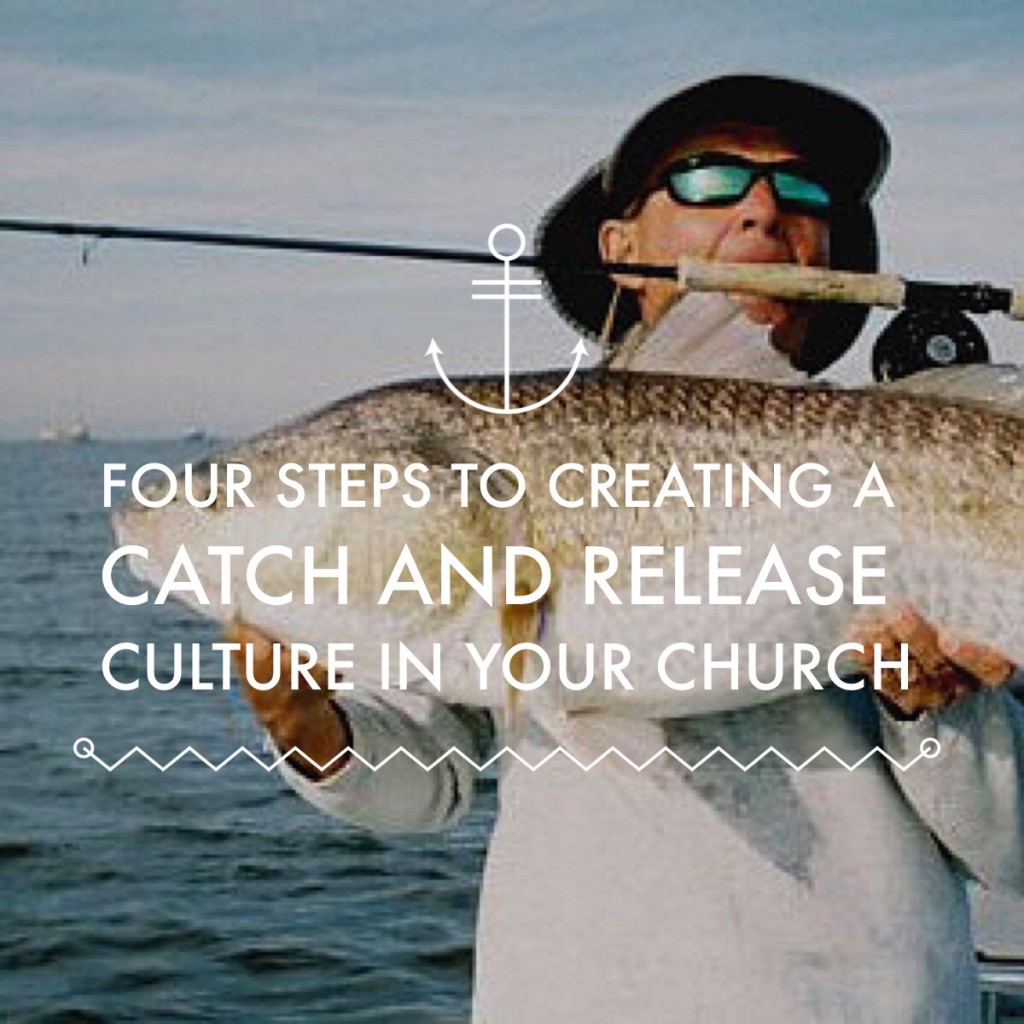Fishing.
My first real job out of college was to work as the Environmental Education Specialist for the Fish and Boat Commission of Pennsylvania. It was probably one of the most original, most interesting positions I’ve ever had—especially in the fact that when I started the position, I really didn’t know how to fish or paddle a boat.
My job wasn’t just to take canoes out on creeks and spend all day fishing all day. The purpose of my work was to equip people of all ages to fish and boat and to do so in a way that would protect and preserve the environment and its wildlife for future generations. On weekends, I would teach four hour Family Fishing Programs where I demonstrated how to use a rod and reel and safely take a fish off a hook. In the Program, I encouraged participation in catch-and-release fishing because it allowed opportunities to enjoy the sport while at the same time allowing the trout, sunnies, and carp to return to their habitat and multiply.
I taught that if everyone held onto their catch without releasing them, the population of fish in the region would drastically decrease, and future fishing would be very limited. Furthermore, the overall health of the ecosystem could hinge on the simple practice of catch-and-release.
Catching WITHOUT releasing leads to limits. Catching AND releasing exceeds limits.
The Pain of Catch and Release
Admittedly as church leaders, it’s usually easy for us to catch and difficult to release the people in our care. This is one of the struggles church leadership faces when they hear the call to start fresh expressions of church.
The primary aim for these fresh expressions is not recruitment for the established church but rather the expansion of the Kingdom. Commissioning talented and capable pioneer leaders within our communities to “go and stay” without the expectation of sending at least some of their catch back home often brings questions of “why would we do that?” or “what about us?” There’s a sense of stability and control that comes with maintaining and growing what’s going on in our churches—no matter if it’s a congregation of 50 or 500 or 5000, and no matter if it’s two, 20, or 200 years old.
Our expectations for the future are based on our experience of the past, and when we know what has worked in the past, our tendency is to plug people into roles and positions that enable the present to continue the past. This isn’t a bad thing until it limits our growth and represses the new thing that God wants to do. Yes, even springboards need a stable surface, but if you remove the springs, you defeat the purpose.
Four Steps to Creating a Catch and Release Culture in Your Church
So when an established church senses a call to start fresh expressions of church, how do pastors, elders, ministry leaders, and staff shift from a mindset of catch-and-control to equip-and-release? How can these leaders help their congregations to recognize and embrace the idea of enabling people to multiply the fishing potential—though it involves risking entrance into uncharted waters?
Preaching and teaching
The mission of the big-C Church is to “go” and “make disciples” (Matthew 28). God is a sending God—his Son, Spirit, and us. Just as Jesus enabled and equipped his disciples and then sent them out to do ministry and multiply his work, we, too, need to keep this mission at the center of all we do. In the words of Archbishop William Temple, “the Church is the only organization that does not exist for itself, but for those who live outside of it.” Whether Baptist, Methodist, Anglican, Presbyterian, even the histories of our denominations point to the risk-taking of pioneering leaders who saw the need to reach people where they were in different ways.
Telling stories
Communication is essential for a congregation to take ownership and to see the work of fresh expressions of church—and attempts to start them—as connected to and not apart from the ministry of the established church. Sharing stories of pioneers connecting with people who never would attend a Sunday service, and yes, even stories of failure, lets the whole church know that these new forms of church are worth it.
Creating a culture of sending
Some leaders may be starting things in their own communities because the church hasn’t made room or empowered their gifts of leadership. What if instead of trying to fill gaps in ministries and becoming upset when someone wants to start a soccer club instead of teaching Sunday School or volunteering in the nursery, we supported and equipped them to start a fresh expression by taking part in a Pioneer Learning Community? What if we identified “Pioneer Ministries” as another ministry of the church, in addition to Youth ministry, Children’s ministry, Visitation ministry, etc.?
Empowering Prayer Teams
Prayer is central to the work of Fresh Expressions, and it is often through prayer that we gain a sense of being part of the greater story that God is writing. When we release leaders, we are forced to rely on the Holy Spirit’s guidance. Prayer helps us keep our focus on what God wants to do over what we want to do.
Releasing pioneering leaders is essential for established churches to start, grow, and multiply fresh expressions of church in our communities, as well as maintain the missional health of our church ecosystem. What practices have you seen to be fruitful in moving from a mindset of catching/managing to that of equipping/releasing?
Join a Pioneer Learning Community and learn how to start a fresh expression of Church


